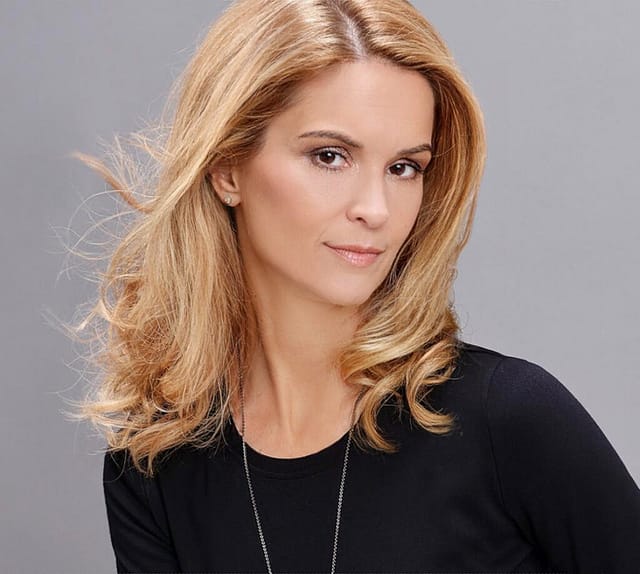
Let’s Talk About Breast Support in Ballet
I started wearing a sports bra under my leotard when I was 12. At first, the extra support helped me feel more secure in my rapidly changing body. But I was the only one at my school wearing one, and the same was true at my first intensive the next summer. While no one ever explicitly told me as much, to me, one message became clear: In the pre-professional space, sports bras did not belong—and neither did dancers who wore them.
I decided to abandon the bras. But ever since then, I’ve continued to think about the fraught topic of breasts in ballet, and how it affects dancers of all ages and sizes.
Keeping breasts adequately supported is, in fact, a matter of health, and it improves performance in a way I wish I’d known while dancing. But deep-seated industry biases, power dynamics, and dress codes complicate matters. For artists wondering what to do—and for the leaders and teachers who work with them—here’s what to consider about ballet and breast support in 2025.
Why Support Matters
Dance is a high-performance activity, and the bar for technical and artistic performance continues to rise. Without proper support, breasts can move several inches in any direction (up and down, forward and backward, sideways, and anywhere in between) during dance. In a jumping jack, they can move up to 7.5 inches, says Dr. Stephanie Potreck, a dance medicine and nutrition specialist based in Germany. For context, she says, “that’s nothing compared to the allegro we do in ballet.” Intense, repetitive movements over time can stretch unsupported breast tissue, causing pain and irreversible sagging, no matter the cup size.
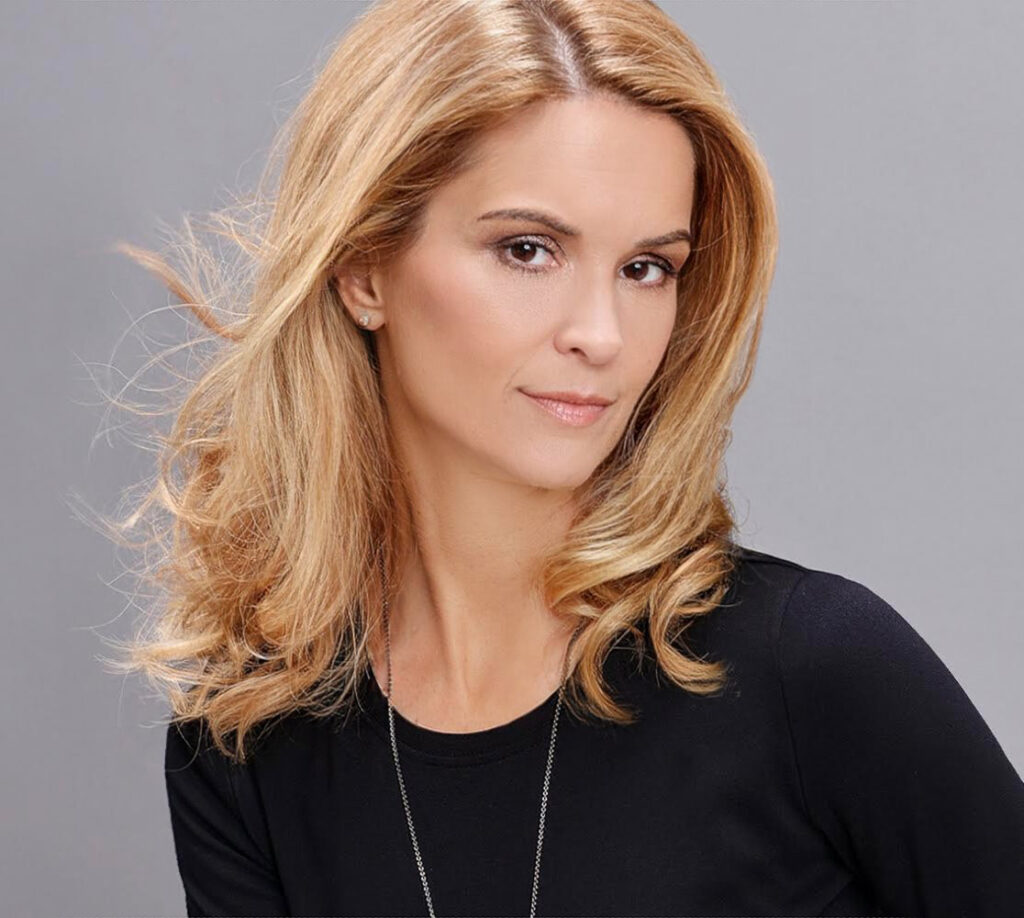
Proper support also affects physical performance. Potreck explains that when unsupported tissue moves, the body counterbalances with micro-adjustments, which requires extra energy. Those extra movements also increase the chances of landing incorrectly or compensating in other parts of the body, says Potreck. (A 2022 study of female college athletes found that people are more likely to get an ACL injury without a well-fitting sports bra.) Proper support improves movement efficiency, says Potreck. “That means you need less oxygen to perform, and you run less risk of injury.”
Without support, your stride length can shorten, and acceleration decreases by up to 7 percent, says Lucy Horsell, co-founder of the UK–based sports bra company PEBE. While that might not sound significant, she says the effects build over time. Plus, it can affect posture, causing back and neck pain, and even compromise core engagement and breathing. “With the right support,” says Horsell, “you’re going to feel stronger and less tired, and you’re going to recover more quickly.”
Narrow Standards
Despite the scientific evidence about proper support that’s been uncovered in recent decades (breast health is still, unfortunately, a relatively new frontier in medical research, says Potreck), sports bras—and breasts—continue to be taboo in ballet.
There’s a harmful, historically perpetuated belief that people with larger breasts are not fit for ballet, says Alex Maureen Newkirk, a New York City–based freelance dancer and adjunct dance instructor at New York University’s Tisch School of the Arts. She comments that the irony of wearing sports bras is that they can draw attention to what makes you feel insecure in the first place: “You want to feel comfortable and safe physically, but you also don’t want to feel like you’re sticking out more than you do already.”
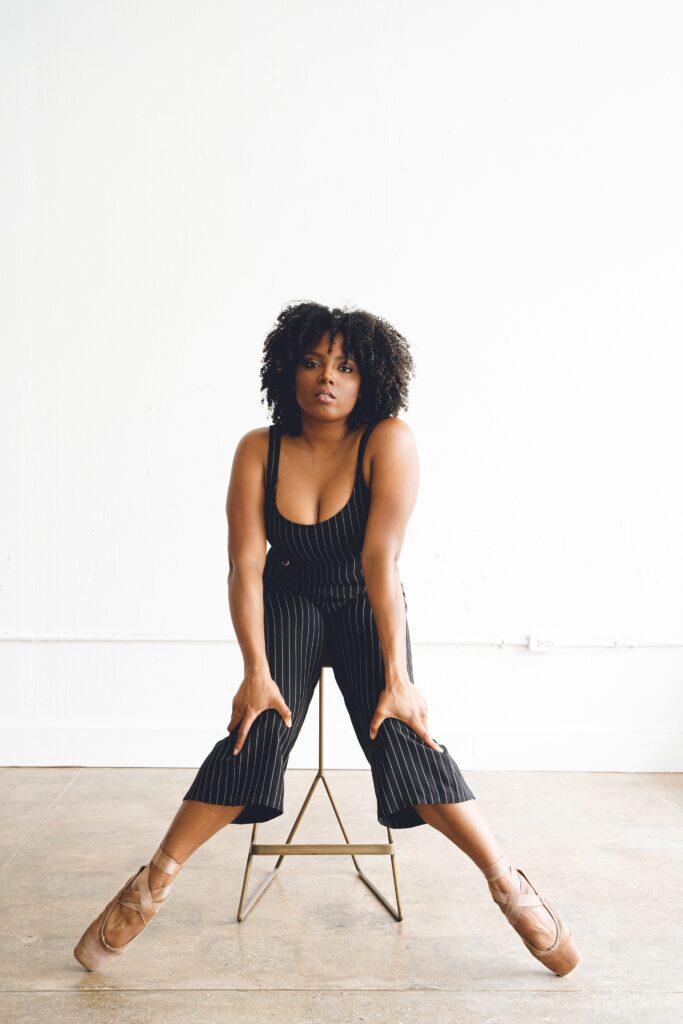
In college, Newkirk began wearing razorback leotards with Nike bras underneath—shelf liners became inadequate, and spaghetti-strap leotards were out of the question. While the bras helped, they were a hassle with laundry and an extra expense, and she was one of the only dancers in her college program who wore them. Then a professor said Newkirk’s bra was disrupting her line because it was a different color. “I thought, You know what also ‘disrupts the line’?” Newkirk recalls. “Pink tights on a Black woman.” In her own experience, ballet’s breast problem had clear racial implications.
In general, she continues, bras are less common in more professionally affiliated programs—which sends a message that they aren’t professional. Some dress codes require specific leotards with sleeves or backs that make bras more obvious, or with softer fabrics that provide little support. In some cases, bras must be hidden. Others prohibit undergarments altogether. “I find that to be extremely ostracizing,” says Newkirk. “It’s like you’re telling dancers they have to get out from the start. Because of a dress code, and centuries-old standards, you miss out on fueling talent.”
Sewing Up Solutions
As a student, Julia Cinquemani, a former dancer with Miami City Ballet and Los Angeles Ballet, chose not to wear bras so she wouldn’t stand out. “It’s not a social norm in ballet culture,” she says. Instead, she sewed bust panels on her leotards using old tights. “There’s a lot of shame around not fitting in the literal mold of certain leotards,” she says. “You think, Does that make me not accepted by this program? In your teen years, you’re already constantly comparing and criticizing yourself. If there’s an extra bounce or jiggle, you immediately feel looked-at. It affects your confidence.”
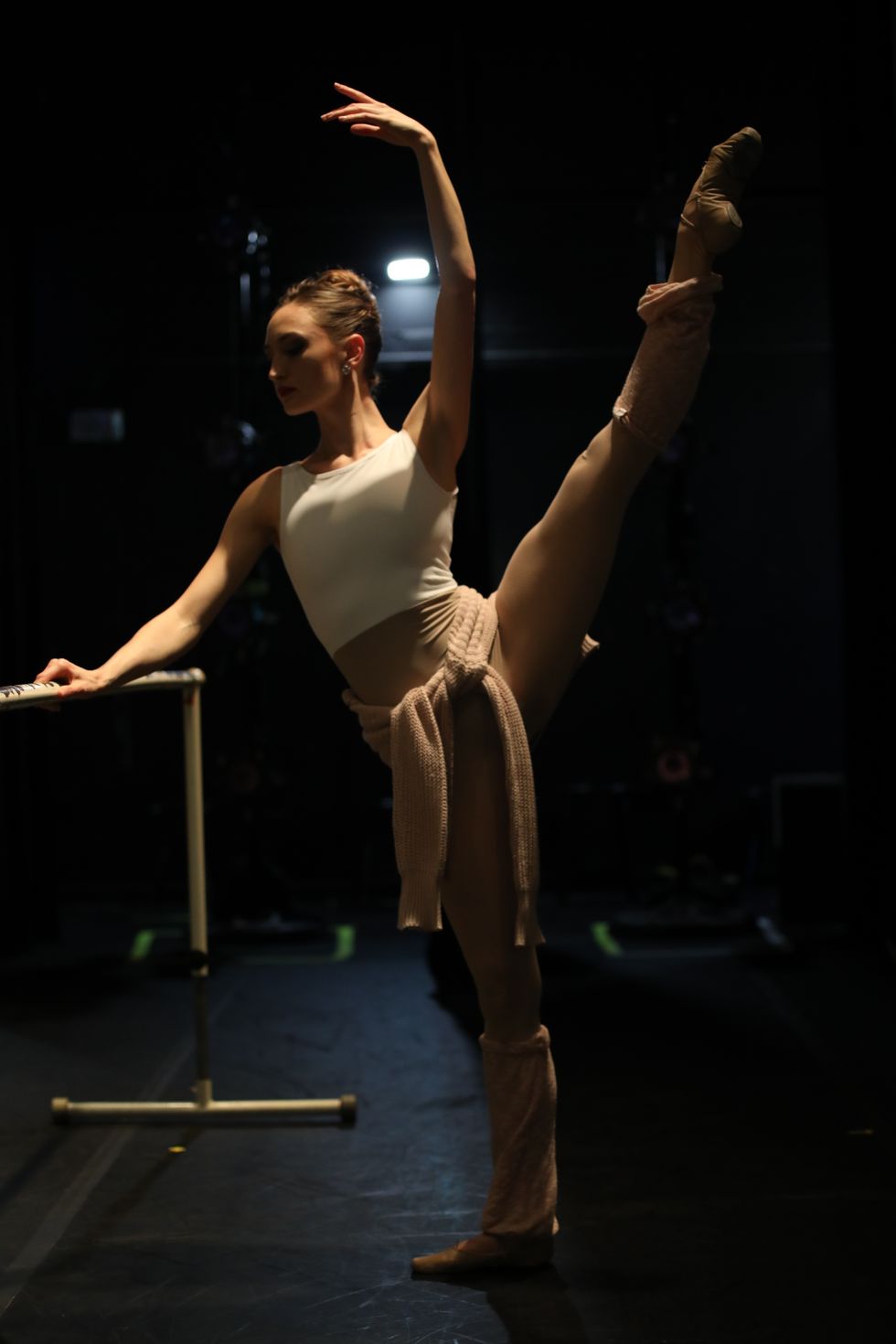
Even with the extra panels, Cinquemani found herself dancing smaller to reduce movement and avoid accidental slips. But as a Professional Division student at Pacific Northwest Ballet, she had an “aha” moment: Why not construct a leotard around a sports bra? In 2011, she founded Jule Dancewear to do that, combining compression fabrics with tailoring techniques to construct a “supportive silhouette” on the body that was also flattering. “It’s fashion and function combined,” she says. Imperfect Pointes recently debuted a “We Got Boobs” line, and Cloud and Victory uses compressive fabrics as well.
Still, says Cinquemani, “most of the cute stuff is not engineered for all body types,” and most dance-specific undergarments provide little help. Potreck notes that because breast tissue moves in multiple directions, dancers need support across the back, preferably with adjustable straps, to avoid straining the neck and shoulders. “Unfortunately, that disqualifies leotards with low backs,” she says. Body tape is an option—Newkirk would tape her chest for performances—though it’s time-consuming and can irritate skin with repeated use. For performances, costumes should be tailored to fit the dancer accordingly, providing the support they need.
Newkirk hopes to see supportive dancewear options become more mainstream. “I’d love to get rid of the need to wear a sports bra. We have the technology. I’d love to see major companies, like Yumiko, put forth an effort for all women.”
Conversation and Change
Horsell believes that overcoming taboo requires open conversation. Last March, PEBE partnered with The Royal Ballet School for an educational workshop and school-funded bra fittings. While the fittings were optional, nearly all the female students showed up. “I thought they’d say, ‘I am never going to want to talk about breasts with you, because I’m a ballerina,’ ” says Horsell. “After the presentation, we experienced the exact opposite.” TRBS students now have the option to put a T-shirt over their leotard while rehearsing. “The fact that the school is bothering is hugely commendable,” says Horsell. “I would encourage other schools not to shy away from these topics. Dancers have boobs. Talking about it normalizes that.”
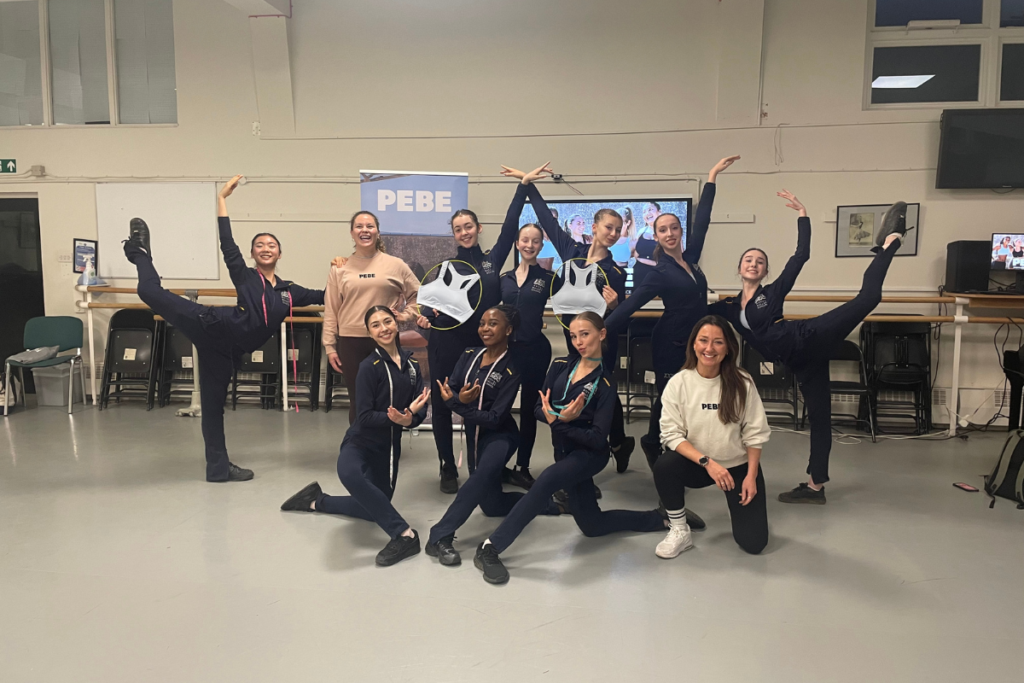
Potreck encourages educators to focus on science—and embrace the reality that a narrow ballet aesthetic is no longer state-of-the-art. “Let’s say your teacher gets sick,” she says. “Are they going to be okay with medical treatment from the 1960s? Because that’s basically where we are in terms of breast health with ballet.” But if you do face backlash, says Cinquemani, take those comments with a grain of salt. “At some point, you can’t change your body. It’s a matter of staying above the comments—don’t let negative opinions define you.” She also encourages dancers to wear what feels good to them. “I know when I’m wearing a leotard that fits really well, I have a better day.”
As a teacher, Newkirk makes it clear that bras are welcome in her class, and if she sees a dancer struggling with confidence, she reaches out to a trusted guardian to discuss their options. She encourages others to do the same. “I know the amount of money, time, and sorrows it took me to get through it,” she says. “We have the opportunity to change things. And why wouldn’t we?”
The post Let’s Talk About Breast Support in Ballet appeared first on Dance Spirit.